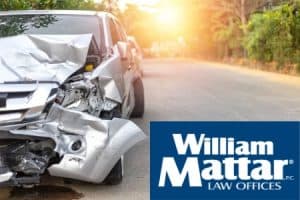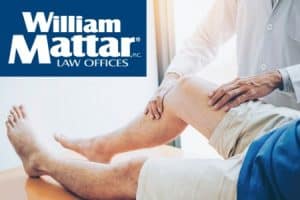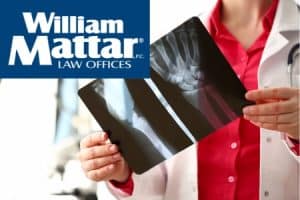No-Fault Insurance Explained: A Comprehensive Guide
 You are stopped lawfully at a red light when a rear-end collision pummels your vehicle from behind.
You are stopped lawfully at a red light when a rear-end collision pummels your vehicle from behind.
You experience sudden neck and back pain, and it’s not going away. The new symptoms affect your ability to go about your daily life: you can’t work, you can’t mow your lawn, and you struggle to spend quality time with your family.
After a car accident, it is natural to expect to be made “whole,” and it is even more natural to expect the motorist who caused the accident to account for it.
You may be surprised to learn that this is not always the case in New York State.
New York is a no-fault insurance state. What this means is that in most cases your own car insurance policy has certain coverages that you will use after a car accident, even though the car accident was not your fault. This may seem counter-intuitive, but this is New York’s system of insurance and you must work within it.
No-Fault Insurance Explained:
What Are Economic Damages Vs. Non-Economic Damages?
After a car accident, you may sustain certain damages and seek recovery for those damages. Economic damages includes lost wages and medical expenses. Non-economic damages include pain and suffering and loss of enjoyment of life. These separate categories of damages are very different from one another. Unlike economic damages, which can be accurately calculated with a spreadsheet and calculator, non-economic damages are little vague. It is the experience you go through after a car accident, and it is highly personal to you.
Non-Economic Damages Example
 To give you an example of non-economic damages for pain and suffering, consider the following hypothetical situation. Assume that “Joe” enjoys after-dinner walks with his family, and he has always enjoyed these pleasant walks through the neighborhood to aid with digestion. He has gone on them for years, and it is something he cherishes.
To give you an example of non-economic damages for pain and suffering, consider the following hypothetical situation. Assume that “Joe” enjoys after-dinner walks with his family, and he has always enjoyed these pleasant walks through the neighborhood to aid with digestion. He has gone on them for years, and it is something he cherishes.
Now, assume that Joe is involved in a car accident, and his lower spine is injured. He never complained of back pain before but now experiences unrelenting pain. As a result of these new symptoms, he can no longer go on his after-dinner walks, causing him distress and anguish. The quality time he once spent with his family during evening walks is now spent staring at the T.V. because he cannot physically bring himself to go on these walks.
This is loss of enjoyment of life, a component of pain and suffering, and an example of non-economic damages. It may be difficult to assign a specific dollar amount to Joe’s newfound inability to walk with his family, but the loss is real and tangible. If it were not for the other driver’s negligence, Joe would have continued to be on the sidewalk with his family.
Economic Damages Example
Contrast Joe’s non-economic damages with his economic damages. Assume that before the accident Joe was earning $1,000 per week at his job, but the injuries caused by the collision have rendered him unable to work. Assume that he misses eight weeks of work. At this time, his economic damages are $8,000 ($1,000 per week X 8 weeks).
As you can see, in most cases economic damages are easier to calculate than non-economic damages. Calculating economic damages is not always easy. If Joe is taken out of work for life, his future economic damages will have to be projected by taking into account the rate of inflation, trajectory of his earning capacity, and the duration of his employment. That can get complicated.
Now that we understand the difference between economic and non-economic damages, we will explore how you can recover damages after a car accident. New York is a no-fault insurance state, and you may be surprised to learn which insurance company pays for what.
No-Fault Insurance and Responsibility of the Insurance Carrier
After a motor vehicle accident, the applicable no-fault insurance carrier will pay for certain economic losses regardless of fault. This “basic economic loss” is defined to mean medical expenses, lost wages, and other reasonable and necessary expenses, in an amount of up to $50,000. In most cases, the applicable no-fault insurance carrier—not the at-fault motorist—will pay for these items.
Medical Expenses
 According to the law, basic economic loss includes medical, hospital, surgical nursing, dental, ambulance, x-ray, prescription drug and prosthetic services, psychiatric, physical therapy and occupational therapy and rehabilitation; and “any other professional health services.” According to the law, costs for the above treatments and remedies are considered basic economic loss “without limitation as to time, provided that within one year after the date of the accident causing the injury it is ascertainable that further expenses may be incurred as a result of the injury.”
According to the law, basic economic loss includes medical, hospital, surgical nursing, dental, ambulance, x-ray, prescription drug and prosthetic services, psychiatric, physical therapy and occupational therapy and rehabilitation; and “any other professional health services.” According to the law, costs for the above treatments and remedies are considered basic economic loss “without limitation as to time, provided that within one year after the date of the accident causing the injury it is ascertainable that further expenses may be incurred as a result of the injury.”
In other words, medical treatment rendered five years after the accident can still be considered part of basic economic loss, as long as within one year after the accident it was “ascertainable” that such treatment would be medically necessary. If that is not the case, the no-fault insurance carrier could have a potential basis to refuse payment.
Lost Wages
Basic economic loss also includes “[l]oss of earnings from work which the person would have performed had he not been injured, and reasonable and necessary expenses incurred by such person in obtaining services in lieu of those that he would have performed for income.” It’s important to note that these lost wages are limited in amount and duration: “up to two thousand dollars per month for not more than three years from the date of the accident causing the injury.”
Lost wages are limited. Let’s say Joe was making $1,000 per week before the accident, and because of accident-related injuries he can no longer work. If Joe misses three months of work, we know he lost out on $12,000 in lost wages ($1,000 per week x 12 weeks). Unfortunately, if Joe just has the state-minimum coverage, he will not be able to recover all of his lost wages from the no-fault carrier. He will be limited to “two thousands per month,” allowing him to recover just $6,000 ($2,000 per week x 3 months) from the no-fault insurance carrier.
How does he make up the difference? Well, it depends.
If Joe purchased additional personal injury protection (“APIP”) or optional basic economic loss (“OBEL”), the no-fault insurance carrier may be able to make up the difference, albeit through a separate type of coverage. If Joe did not purchase APIP or OBEL coverage, he will need to bring a direct claim against the at-fault motorist.
Other Reasonable and Necessary Expenses
Basic economic loss also includes “[a]ll other reasonable and necessary expenses incurred, up to twenty-five dollars per day for not more than one year from the date of the accident causing the injury.” This category is usually invoked to provide claimant’s with reimbursement for mileage, toll, and fare costs to and from medical appointments.
New Yorkers injured in a motor vehicle collision within the state must generally establish a “serious injury” to recover for pain and suffering. This is part of the compromise: a limited right to sue the at-fault motorist for pain and suffering in exchange for “basic economic loss” of $50,000 for lost wages, medical expenses, and other costs.
In order to qualify as basic economic loss, however, medical expenses must be “incurred as a result of the injury” and loss of earnings from work must have been wages the person “would have performed had he [or she] not been injured.”
The bottom line is that the medical expenses or missed time from work must flow from injuries caused by the collision. Sometimes, the no-fault insurance company will want to verify whether medical expenses or missed time from work are not related to accident-related injuries, but instead from another incident.
What is an Independent Medical Examination?
 New York regulations permit the no-fault insurance company to request “any additional verification required . . . to establish proof of claim.” One form of verification is an independent medical examination (“IME”), where a doctor or medical professional hired by the insurance company examines you to see if treatment or missed time from work is medically necessary as a result of injuries sustained in the collision.
New York regulations permit the no-fault insurance company to request “any additional verification required . . . to establish proof of claim.” One form of verification is an independent medical examination (“IME”), where a doctor or medical professional hired by the insurance company examines you to see if treatment or missed time from work is medically necessary as a result of injuries sustained in the collision.
When an injured person receives an IME notice, it can be disconcerting. You are going to all of your appointments and doing what your doctors are telling you to do. You may even be feeling a little better. Who is this other, non-treating doctor, and why does he/she want to examine me?
The answer is that he/she is being paid by the no-fault insurance carrier to examine you.
You may also ask yourself why you are required to see this non-treating doctor at the appointed date and time.
The answer is that if you do not attend, your claim will likely be denied and you may have trouble receiving the medical treatment you need.
What To Expect During an Independent Medical Examination
You receive a notice in the mail requiring your attendance before a chosen doctor or medical professional at a particular date and time. You should not ignore this piece of mail because if you miss the examination without a reasonable excuse, your benefits will likely be terminated. This can be devastating, particularly if you do not have private health insurance of your own. That course of treatment that had served you so well will have been for naught.
If you have a lawyer, you should contact him/her about the notice to ensure he/she was carbon-copied and is aware of the upcoming examination. Even though you are entitled to certain basic economic loss regardless of fault, your ability to show a serious injury can be negatively affected by a termination of benefits—particularly if it gives rise a lengthy gap in treatment.
Depending on the scope of representation, your lawyer can give you advice on what to expect at your upcoming IME. If you have a scheduling conflict, it is normally a good idea to contact your no-fault insurance adjuster and the company administering the IME as soon as possible. This will allow ample time for it to be rescheduled.
The Day of the IME
On the day of the exam, follow the directions on the notice of examination. You will likely check in with a secretary or receptionist, who will mark your attendance. In most cases, you will not be the only examinee for the day. You will probably find yourself in a waiting room with many others.
When your name is called, you will likely be led back to the examination room to be seen by the IME, who will ask you to provide background information, as well as information concerning the collision and your injuries. Be truthful, be cooperative, but always bear in mind that this examiner is not your treating doctor. This doctor has been hired by the insurance company to examine you. Every IME is a little different, and your exam might last from five minutes to an hour depending on the examiner and his/her specialty.
What Happens After the IME?
After the IME, the examiner will draft a written report summarizing his/her findings and opinions. These conclusions will typically contain determinations as to causation and severity, with an eye toward whether certain treatment is medically necessary.
Do not be discouraged by the findings and opinions of the examiner, even if it means the no-fault insurance carrier will not agree to pay for certain treatment or missed time from work. You still have options. To discuss those options, you should speak with your car accident injury attorney and treating doctors.
Establishing a Serious Injury
 New Yorkers injured in a motor vehicle collision within the state must generally establish a “serious injury” to recover for pain and suffering. This is part of the compromise: a limited right to sue the at-fault motorist for pain and suffering in exchange for “basic economic loss” of $50,000 for lost wages, medical expenses, and other costs.
New Yorkers injured in a motor vehicle collision within the state must generally establish a “serious injury” to recover for pain and suffering. This is part of the compromise: a limited right to sue the at-fault motorist for pain and suffering in exchange for “basic economic loss” of $50,000 for lost wages, medical expenses, and other costs.
What is a “serious injury,” and who needs to show one in order to recover for pain and suffering after a motor vehicle accident on New York roads?
Let’s address these questions in order.
What is a “Serious Injury”?
The term is defined to mean a personal injury which results in:
- death;
- dismemberment;
- significant disfigurement;
- a fracture;
- loss of a fetus;
- permanent loss of use of a body organ, member, function system;
- permanent consequential limitation of use of a body organ or member;
- significant limitation of use of a body function or system;
- or, a medically determined injury or impairment of a non-permanent nature which prevents the injured person from performing substantially all of the material acts which constitute such person’s usual and customary daily activities for not less than ninety days during the one hundred eight days immediately following the occurrence of the injury or impairment.
As you can probably already see, some categories are pretty straightforward—think, death, dismemberment, significant disfigurement, fracture, loss of a fetus—while the texts of others create more questions than answers:
- What rises to the level of a “significant limitation of use of a body function or system” and what falls below this standard?
- With regard to “usual and customary daily activities,” what rises to the level of a “material act”?
- When it comes to applying these broad standards to flesh-and-blood people, the answer is not so clear. If you have range-of-motion loss of 10% is that a significant limitation of use? How about 11%? 12%? 20%?
Compounding this difficulty is the fact that the determination of whether or not a person qualifies under one of these categories is a question for the court in the first instance. In other words, a judge will have to determine whether or not your case will proceed to a jury. This requires line-drawing.
While we provide information about the above serious injury categories on our website, there is no substitute for a detailed conversation with an attorney. If you have any questions about New York’s serious injury threshold, please contact our car accident lawyers, who understand this standard and how it applies your case.
Who Has to Show a Serious Injury?
Most injured New York motorists have to show a serious injury to recover for pain and suffering. Thus, the better question is who does not have to show a serious injury.
One major exception is motorcyclists, who are specifically exempted from our no-fault insurance regime.
Another exception is motor vehicle accidents in other states. By its plain terms, the no-fault insurance regime only applies to injuries arising from accidents in this state.
A further exception is claims for personal injuries arising from alleged negligence in maintaining property. Assume, for example, that a horse breaks free from a farm due to the negligence of its owner. You would not need to a show a serious injury in that situation.
Permanent Loss of Use of a Body Organ, Member, Function or System
There are situations where the serious injury threshold may not apply. After a 2001 Court of Appeals decision, Oberly v Bangs Ambulance, 96 NY2d 295 (2001), this category has little practical application. In that case a dentist was injured while being transported in an ambulance. While in transit, the ambulance struck a curb, and the IV pump toppled from a shelf onto his right forearm, allegedly limiting his ability to practice as a dentist. The Court of Appeals—the highest court in New York—held that “to qualify as a serious injury within the meaning of the statute, ‘permanent loss of use’ must be total.”
In other words, after Oberly, the injured person must show total, and a limitation of use alone will not suffice. Practically speaking, it would seem that this category is confined to cases of dismemberment or paralysis—injuries that obviously qualify as “serious injuries.”
“Permanent consequential limitation of use of a body organ or member”; and “Significant limitation of use of a body function or system” categories
These categories are best discussed in concert, because they are often analyzed together. Even though the first category refers to a “body organ or member” and the second category refers to a more expansive “body function or system” the two categories have received equivalent treatment from the courts, with one exception: The first category requires a showing of permanency, while the second does not.
New York courts have identified at least two ways to show that your injuries qualify under one of these categories.
First, an expert’s designation of a numeric percentage of loss of range of motion can be used to substantiate a claim of serious injury. This is range-of-motion loss, and while there is some uncertainty as to the precise range-of-motion measurement necessary, some cases suggest that a deficit of greater than 20 percent is enough to put the question before a jury.
Second, an expert’s qualitative assessment of the condition may also suffice, provided the evaluation has an objective basis and compares the limitations to the normal function, purpose and use of the affected body organ, member, function or system. When it comes down to it, this is basically a medical opinion that subjective complaints of pain and limitation correlate directly with objective medical findings.
These categories are often known as “soft tissue” categories, because they are often invoked when the person has injuries to the neck or back. Soft tissue injuries can be serious, debilitating, and life-changing, but the fact of injury alone is not enough to qualify under the categories. Speak without one of our attorneys about these categories, and whether your injuries qualify under them.
What is the 90/180 Category?
This section examines the last category, known as the “90/180” category. This category is cumbersome to recite and sometimes difficult to truly understand.
Serious injury qualification under category requires:
a medically determined injury or impairment of a non-permanent nature which prevents the injured person from performing substantially all of the material acts which constitute such person’s usual and customary daily activities for not less than ninety days during the one hundred eighty days immediately following the occurrence of the injury or impairment.
Basically, the category is looking for a medically determined injury or impairment that prevents the injured person from performing “substantially all of the material acts” constituting his or her usual and customary activities. The person must be curtailed from performing her usual activities to a great extent rather than some slight curtailment, and the curtailment must occur during a compressed period of time: at least 90 days during the first 180 days immediately following the injury.
One of the first things courts look at when determining whether injuries qualify under the 90/180 category is employment status. If the person was not able to return to work for at least 90 days during the 180 days immediately following the injury, he or she will have a pretty good shot at presenting the claim to a jury. That being said, this category seems to resist bright-light demarcation. Even if the individual does not miss 90 days during the initial 180-day period, qualification under the category is not necessarily foreclosed. Courts have also taken into account whether the individual can perform her ordinary daily chores. Also, in the case of school-aged individuals, courts have honed in on whether or not the individual was able to attend school.
It is important to note that, unlike some of the other categories, the 90/180 category does not require a showing of permanency. The injury or impairment must instead be of “a non-permanent nature.” That being said, once an individual shows that injuries qualify under any of the serious injury categories, he or she can recover for any future pain and suffering.
The 90/180 category calls for immense limitation over a relatively short period of time. If you have questions about whether or not your injuries qualify under the category, call our accident attorneys today.
Contacting a Car Accident Lawyer
Practice Areas | No Fee Until We WinSM | Our Attorneys
If you are injured in a car accident and confused about No-fault Insurance, William Mattar can help. Our car accident lawyers are experienced about the strict deadlines and complex steps required to receive benefits and are available to answer your questions. To get 24/7 help, call (844) 444-4444 or fill out our free initial consultation form.

















